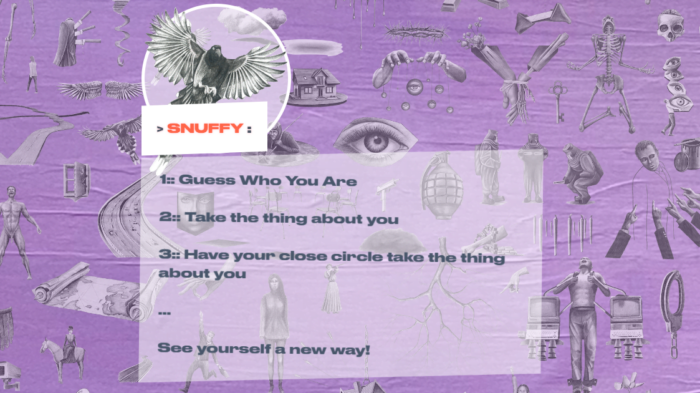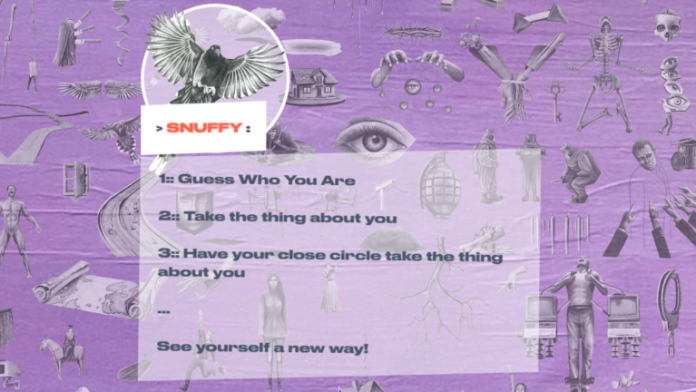
How do you define “identity” in Web3? It’s a question that opens up a can of metaverse worms. Is your online persona a reflection of your true self? Or is it simply a character that you’ve created in lieu of your real personality? Considering the ease through which users can hide their IRL existence behind a cartoon PFP, it can be difficult to trust that others are being their genuine selves from behind a screen.
Yet, things get more complicated when we begin to think of digital identity as something separate from real-life, “meatspace” identity. Perhaps this is the reason the Soulbound Tokens feel so dystopian in concept. In reality, identity is dynamic and subjective to each individual’s sense of self. But at any given time, an individual is likely to provide a different account of their identity, due to their mindset, present situation, and current physical setting.
All in all, identity is a hard concept to grasp. This is especially true in a realm (like Web3 and the NFT space) where anonymous and pseudonymous individuals often reign. Do those in the metaverse truly understand who they are? One creator is trying to find out. “Are you who you are? Or are you who you think you are? Or are you who they think you are,” is what multidisciplinary artist Snuffy is now asking those in Web3.
Snuffy, identity, and mental health
The way we, as a society, approach and understand mental health, has changed drastically in the past few decades. While some cite a lack of understanding as one of the reasons that earlier generations (Gen X and prior) grew up with a “conceal, don’t feel” attitude, in 2022, mental well-being is a hot topic. With the student mental health crisis and the skyrocketing demand for medication providing fuel to the discussion surrounding accessibility to mental health services, it’s no surprise that some individuals consider their mental well-being (or mental illness) to be a part of their identity.
Yet, to Snuffy, real name Julius Margulies, mental health and identity have always gone hand in hand. For the better part of his career as a tattoo artist, he has been melding identity, mental health (often trauma), and the written word to create a unique catalog of physical and digital art. By asking his clients to write a story about a personal experience, he gathers information and translates written testimonials into one-of-a-kind artworks that he then tattoos on his clients. But now, Margulies is hoping to take this cathartic client experience a step further into Web3 and make it accessible to anyone.
With his new project Looking In, Margulies is aiming to give the Web3 and NFT communities more insight into themselves. Just as Myers–Briggs types have become a popular tool for folks to relate to each other over the past decade or so, Margulies has tapped into the Big Five personality traits, creating a gamified NFT experience to add to the trend of self-discovery.
The point of “Looking In”
While Margulies doesn’t claim to be a psychiatrist or licensed mental health professional, he’s let his own experiences with, and vast research about mental illness, plus his aforementioned continuous role as a sort of tattoo therapist, influence his latest endeavor. In recognizing the malleable nature of identity in Web3, he hopes that people can take pause and participate in some self-reflection, utilizing his new project as a guide.

HOW LOOKING IN WORKS. SOURCE: SNUFFY
With Looking In, users can take part in an informal, sliding scale test meant to provide a basic understanding of where they exist within the scope of the Big Five personality traits: extraversion, agreeableness, openness, conscientiousness, and neuroticism. The test will not, in any way, provide a diagnosis or an official analysis of the user’s personality, but exists to offer a tentative sense of self, accompanied by a collage of art created by Margulies that seeks to meld personality traits together as a visual reflection of a user’s test outcome.
The test also exists as a fun mode of connection between users and their close friends/communities. Because after a user finishes their test and sees their results, they are encouraged to have their close peers take the same test, answering questions as they relate to the personality of the user, to compare the user’s conception of their own personality with that of those that know them best. Hence the question, “Are you who you are? Or are you who they think you are?”
“Most people, when I proposed this [question], they realize, ‘I guess I’m a combination of both who I think I am and how I am perceived by others,’” said Margulies. “So we built this feedback loop for people to really be honest with themselves. To see who they are and how they’re perceived by others. And then you can actually see that the way that your close circle perceives you is either the same or different than how you perceive yourself.”
While Looking In — smart contracted by Transient Labs — is set to launch on December 15 at LookingIn.nyc, and users can sign up now, details surrounding pricing have yet to be released. But Margulies says those interested in participating won’t have to worry about token gating or high mint prices that are often associated with large-scale NFT projects. In considering the growing mental health crisis in Web3, he wants this project to be an informal, communal, and lighthearted way for all to be able to “look inward.”
“I would love for this project to be adopted in by the masses, and I’m pricing it in an accessible way. I want as many people as possible to learn a little more about themselves and to find comfort in talking about things like depression and mental illness that are maybe considered taboo to talk about,” said Margulies. “Honestly, I think just for the good of humankind, self-awareness, even for like five minutes, can make the world a better place.”
Source NFT Now

